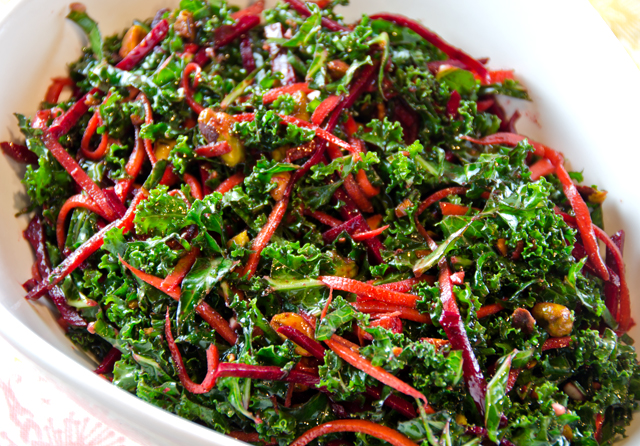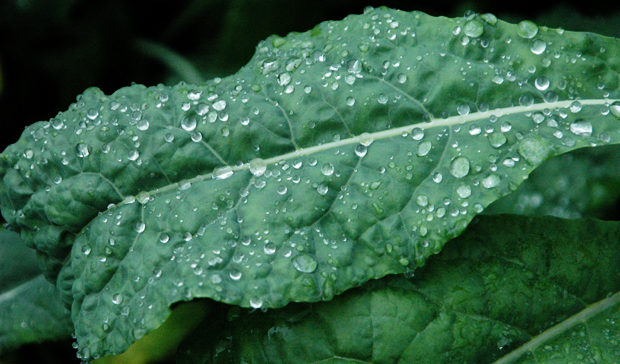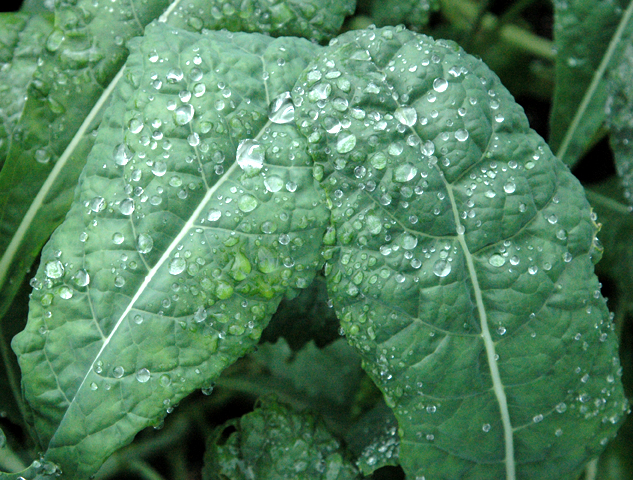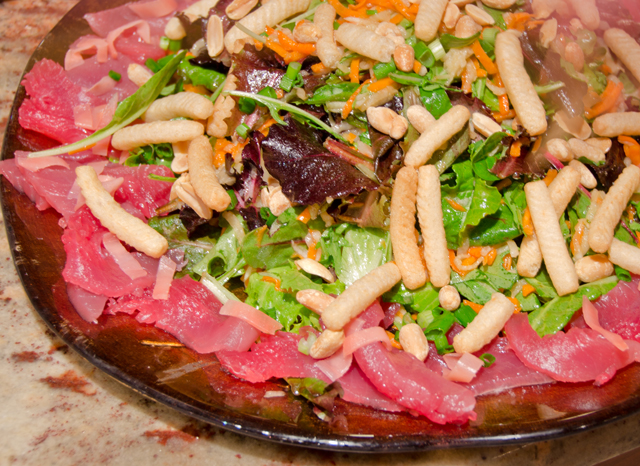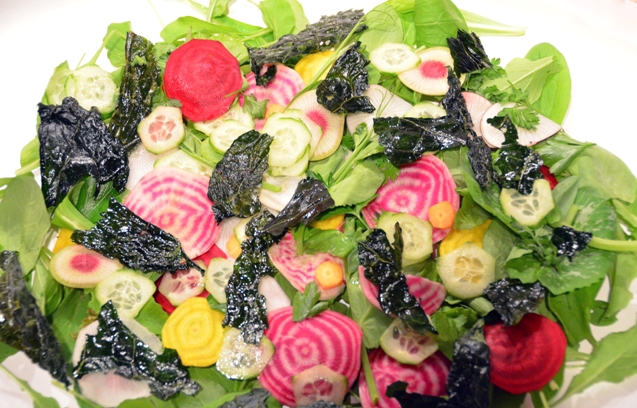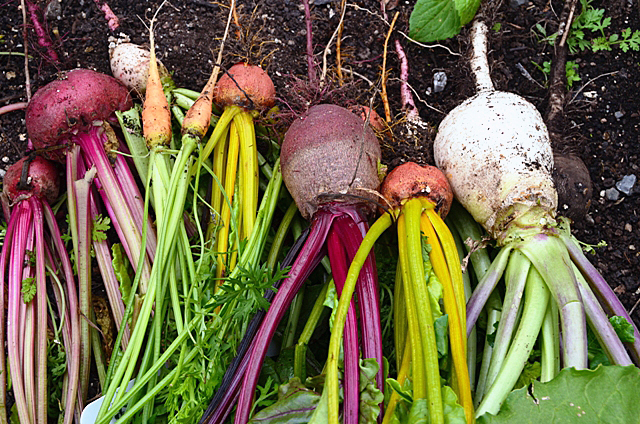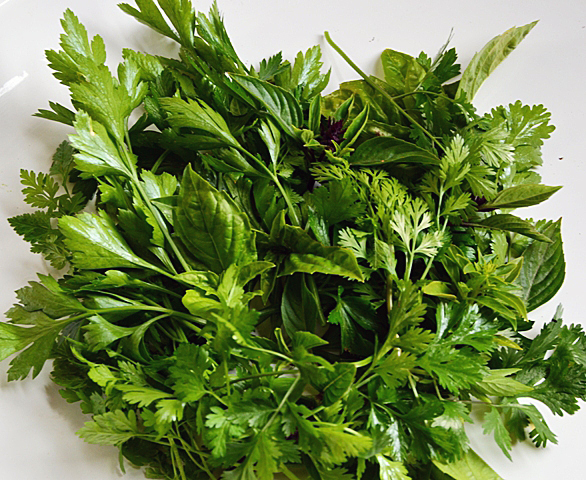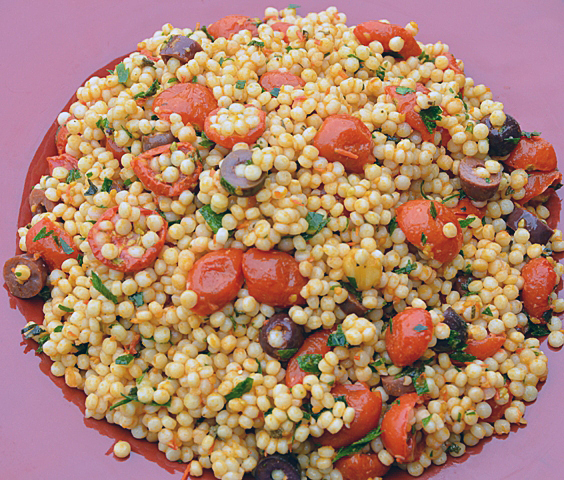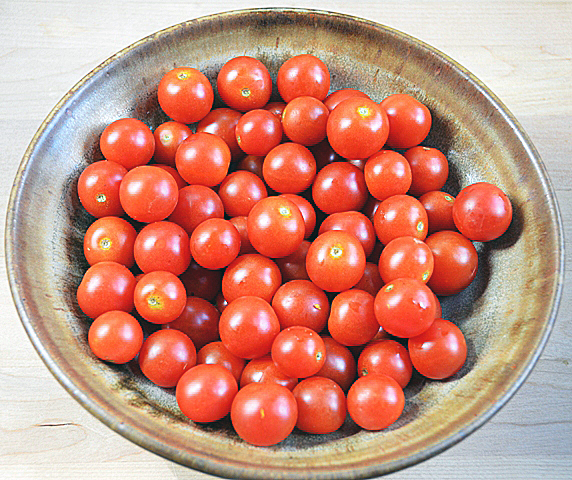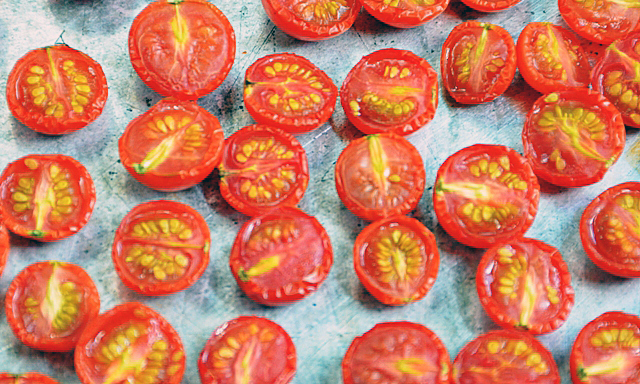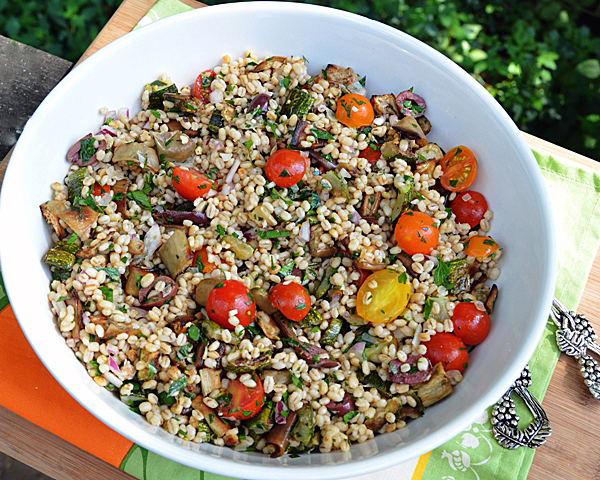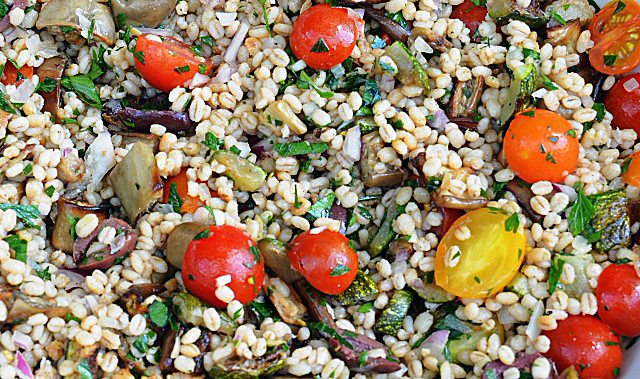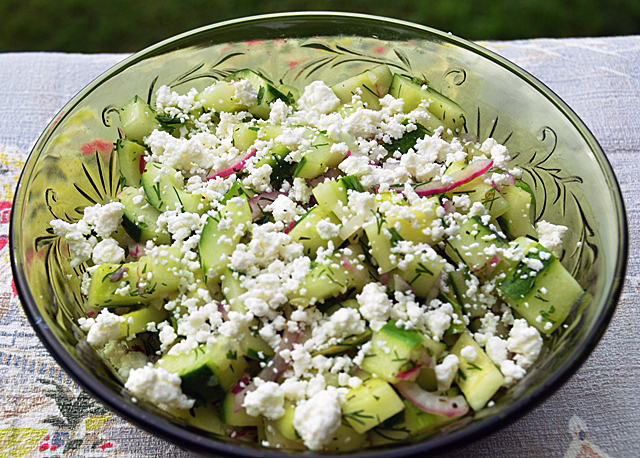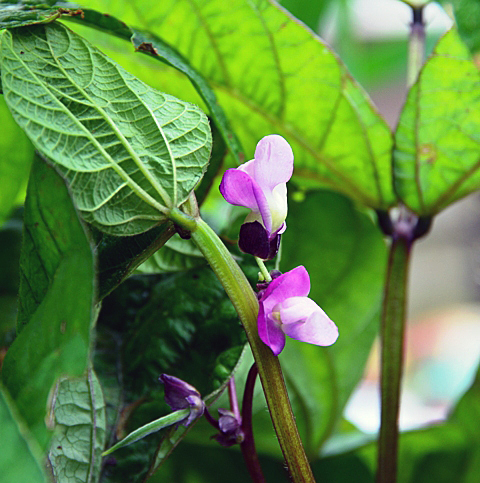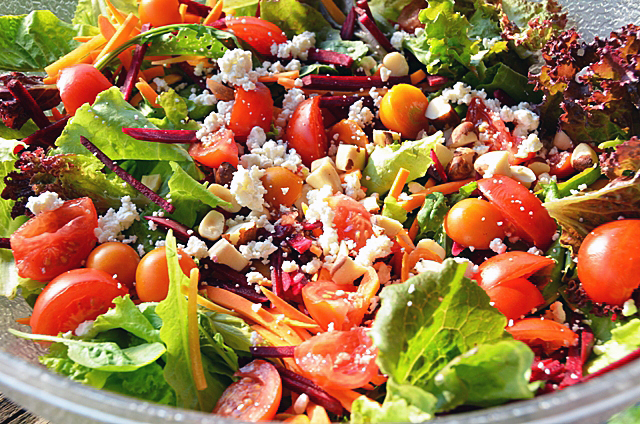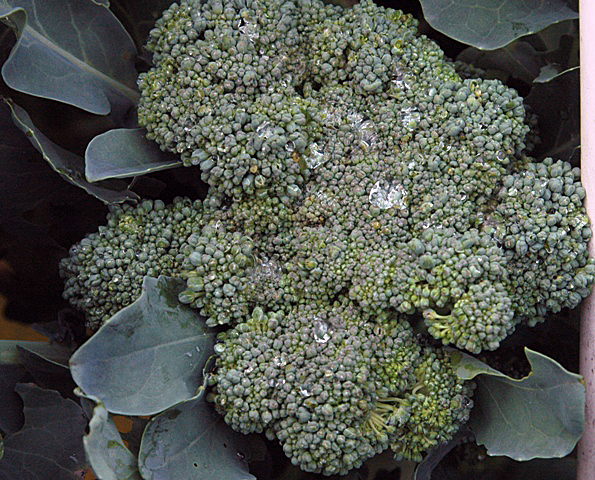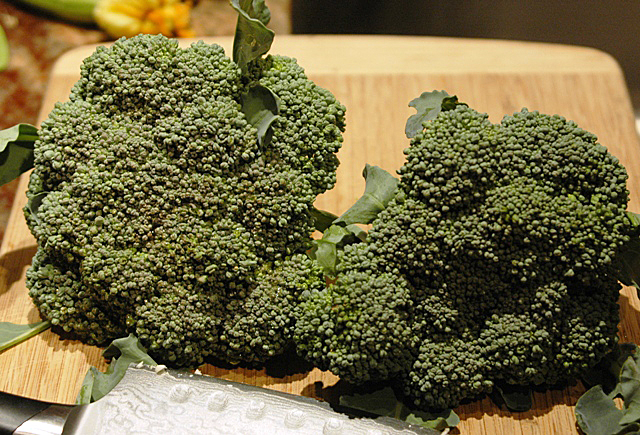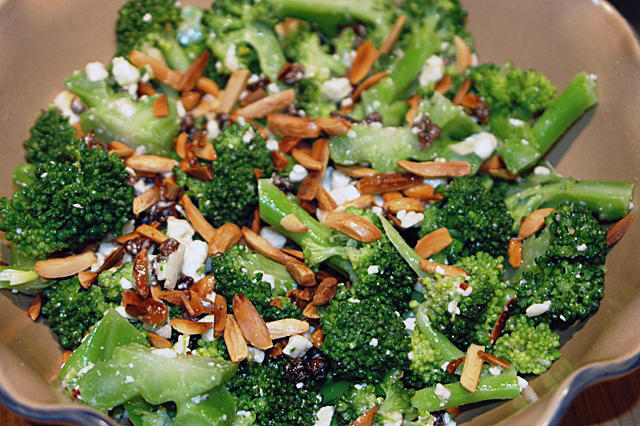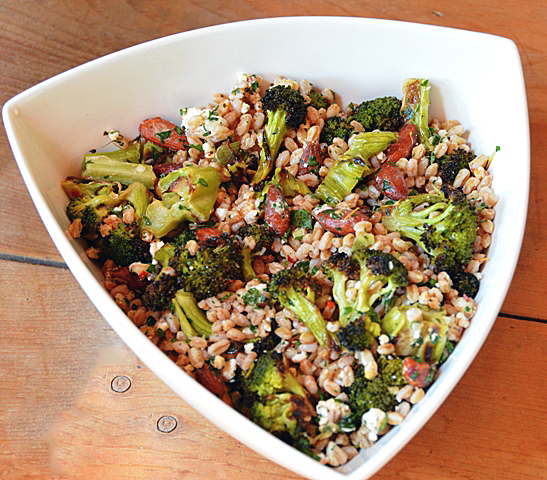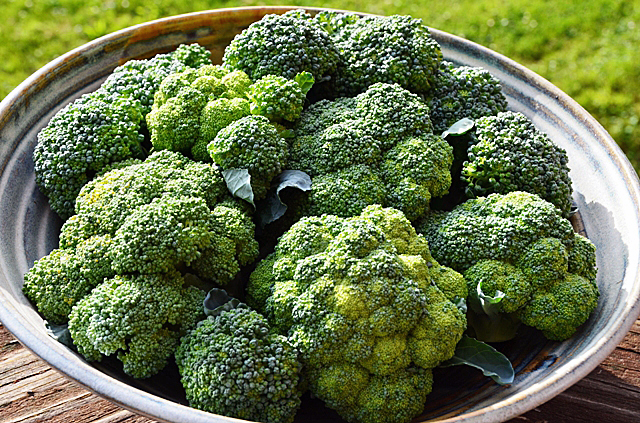I’ve been on a first name basis with kale for quite a few years now. Lacinato, Nero, Tuscan, Dinosaur, and Red Russian, are all varieties we have been growing the last several years. This dark leafy green has been dubbed by nutritionists as a “super food’. Low in calories and high in fiber, it is rich in manganese, and cancer fighting vitamins A, C and K.
We grow kale in the fall, and as the first frosts come, the leaves become even sweeter. At first, I used kale as a side dish or in an improvised stew of sausage, clams, and tomatoes. Now that kale has become the vegetable darling “du jour”, the recipe possibilities have become endless. Kale chips are easy to make and more economical than the six dollars for the one ounce package you would pay in the supermarket. All matter of fruit is being combined with kale to make healthy, fiber rich smoothies. I was looking for a healthy side dish and decided to make a kale slaw with ingredients I already had in my refrigerator.
So what makes it a salad or slaw? One definition I read said that slaw originated from the Danish word, “sla”, short for salad. Probably the most popular explanation originated in the eighteenth century. Our word, coleslaw, is Anglicized from the Dutch, “koolsa”, or cabbage salad. Since cole slaw’s main ingredient is thinly shredded cabbage, I have chosen to bestow the name slaw to this dish. Flatter leaved kale like Lacinato would be easiest for slicing but a curly variety as I used in this recipe works as well. This slaw holds up well for several days, it doesn’t get soggy or wilt, though if you have some left over the next day you might need to drain off a little excess liquid. Beets and carrots happened to be what I had on hand but other vegetables would work as well, turnips, jicama, peppers and shredded cabbage just to name a few. This is an opportunity to pull out the Kuhn Rikon stainless steel julienne peeler to get the fine shreds of carrot. Pomegranate balsamic brings a rich sweetness that plays nicely off the strong flavor of kale. Honey or maple syrup could substitute for the agave sweetener. Use a flavorful extra virgin olive oil since you will taste it in the final dish. The slaw would also be good as a topper for fish or chicken tacos.
Sue’s Kale Slaw
Serves four
Ingredients
- 4c thinly sliced raw kale
- 1c thinly julienned raw carrots
- 1c thinly julienned raw beets
- 1/3c roughly chopped pistachios
- 2T pomegranate balsamic vinegar
- 1T pomegranate red wine vinegar
- 1t agave sweetener
- 1t Dijon mustard
- 1 small clove of garlic, finely chopped
- 1/4c extra virgin olive oil
- Kosher salt and fresh ground pepper
Directions
- Slice out the center rib of the kale leaves and discard. Cut the kale into very thin ribbons to measure out four cups.
- Very finely julienne the carrot and the beets. Add to the bowl with the kale.
- Chop pistachios and set aside.
- Combine the vinegars, agave sweetener, garlic, mustard and olive oil in a small bowl. Whisk gently to combine.
- Pour vinaigrette over the vegetables, you may not need it all, and toss lightly. Add pistachios and toss again. Season to taste with kosher salt and pepper.
